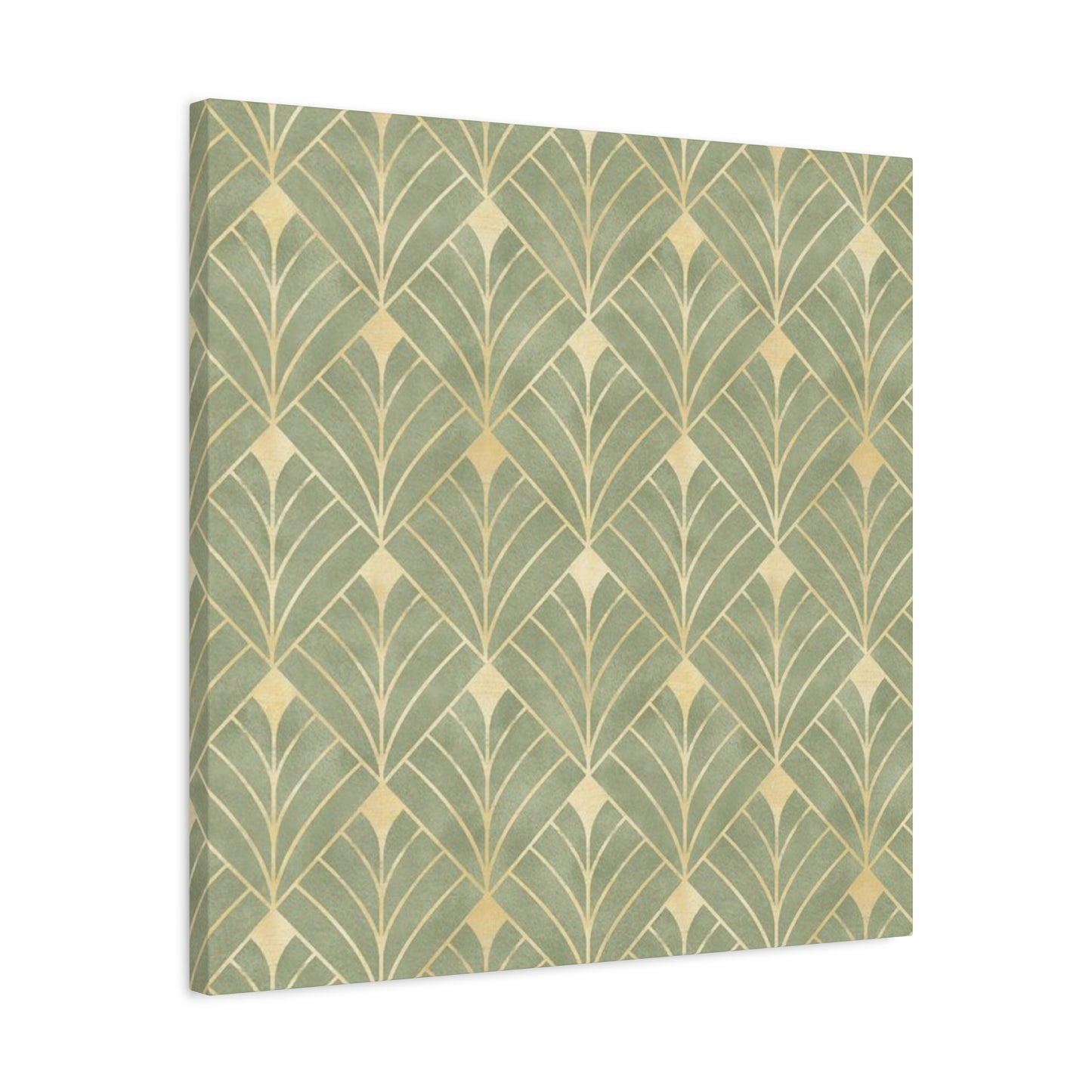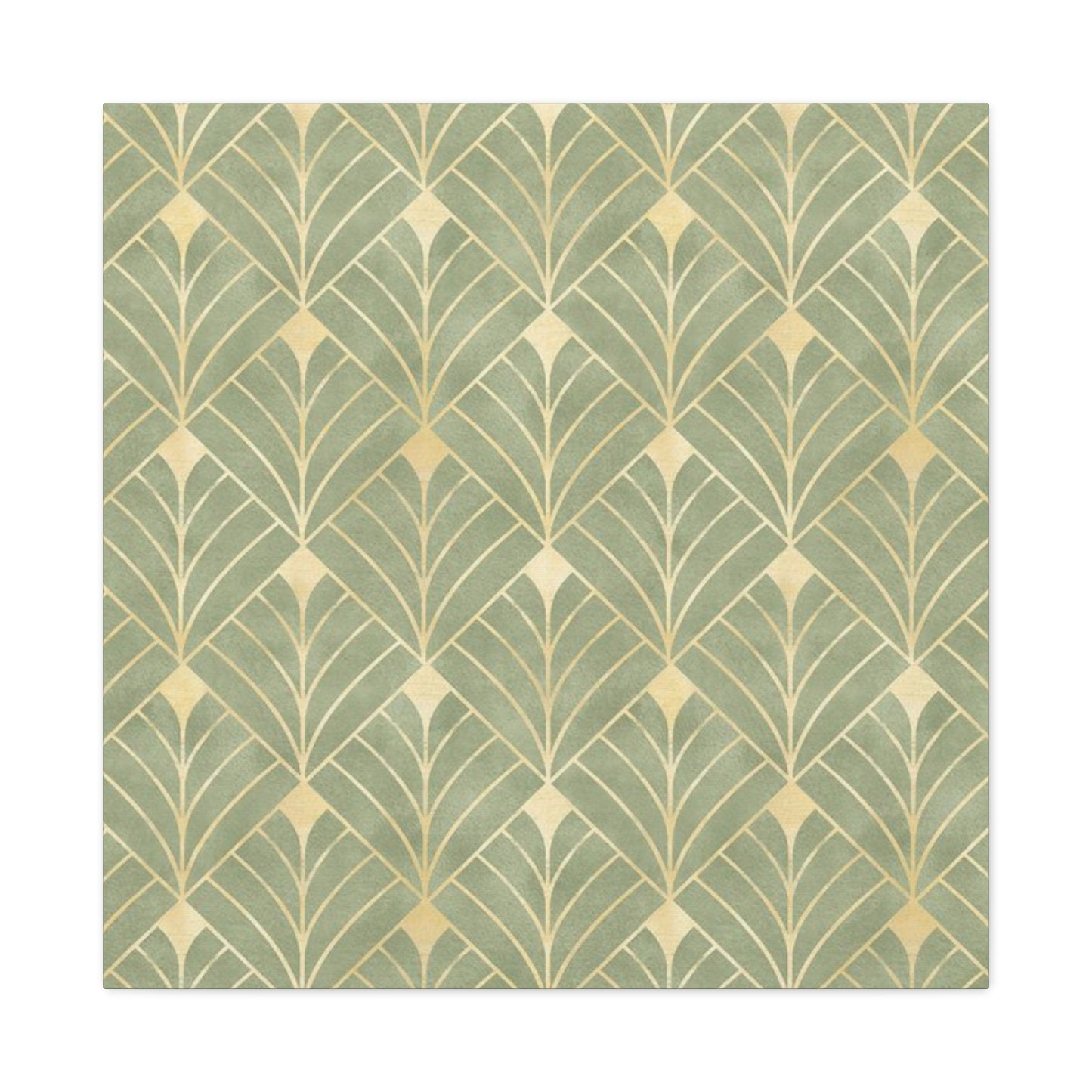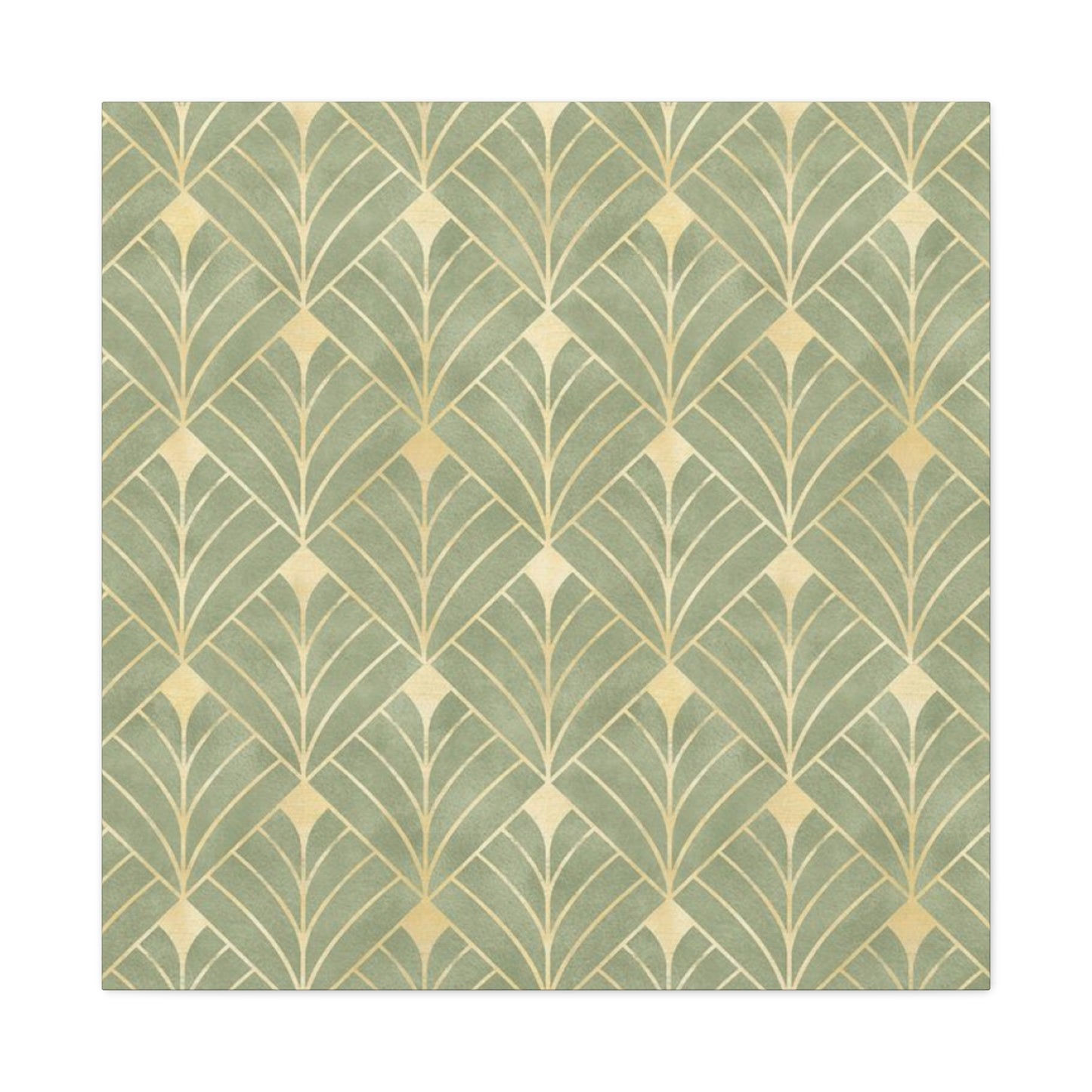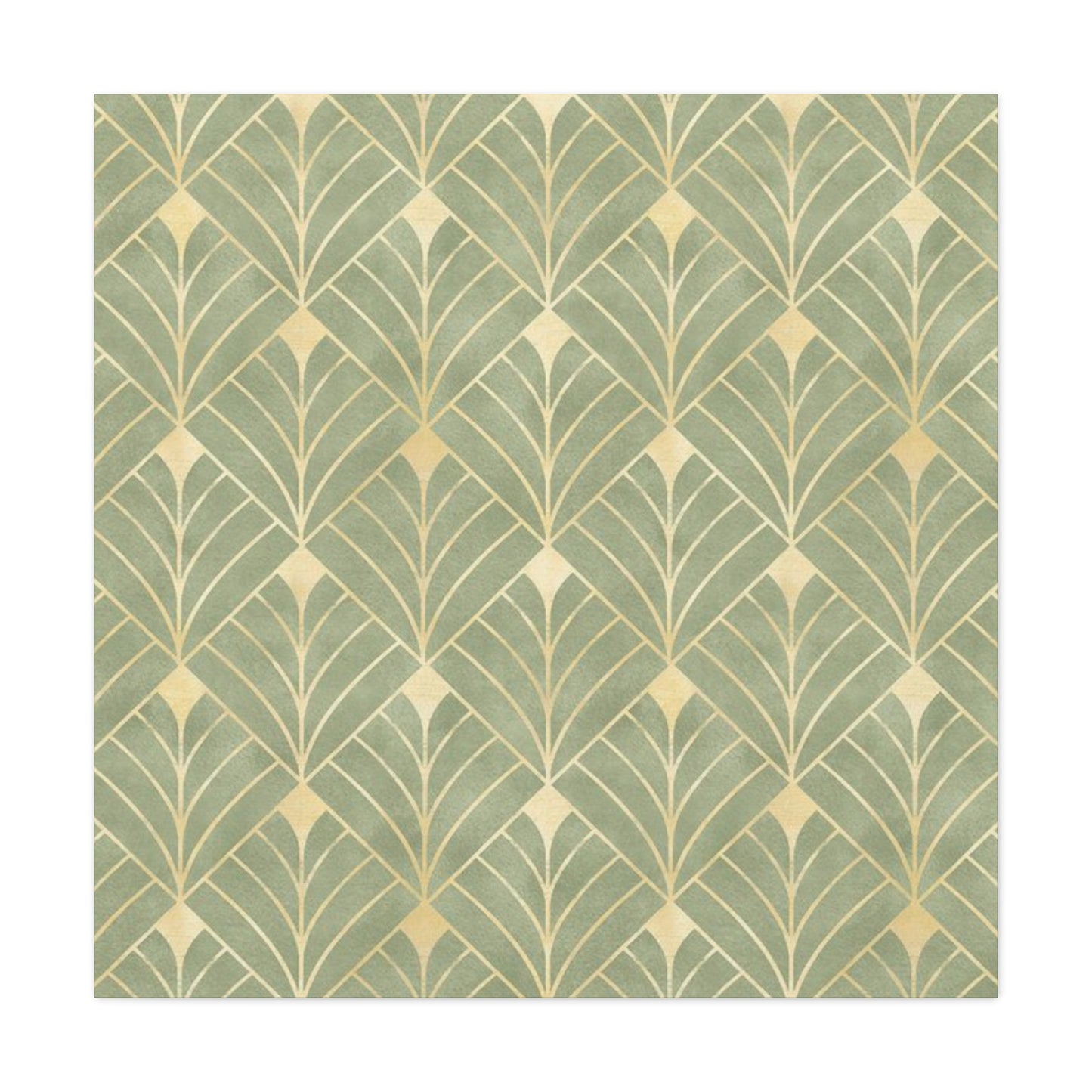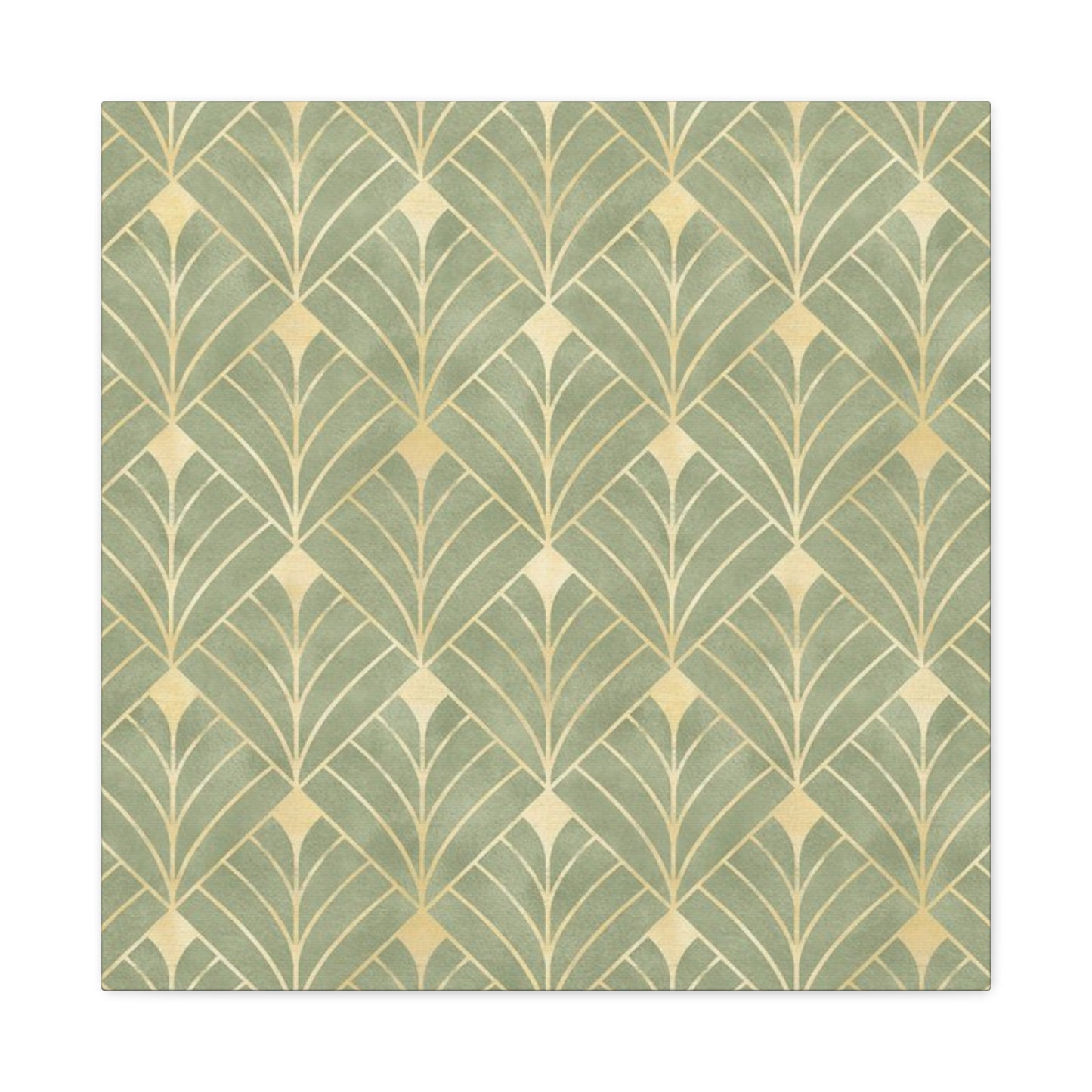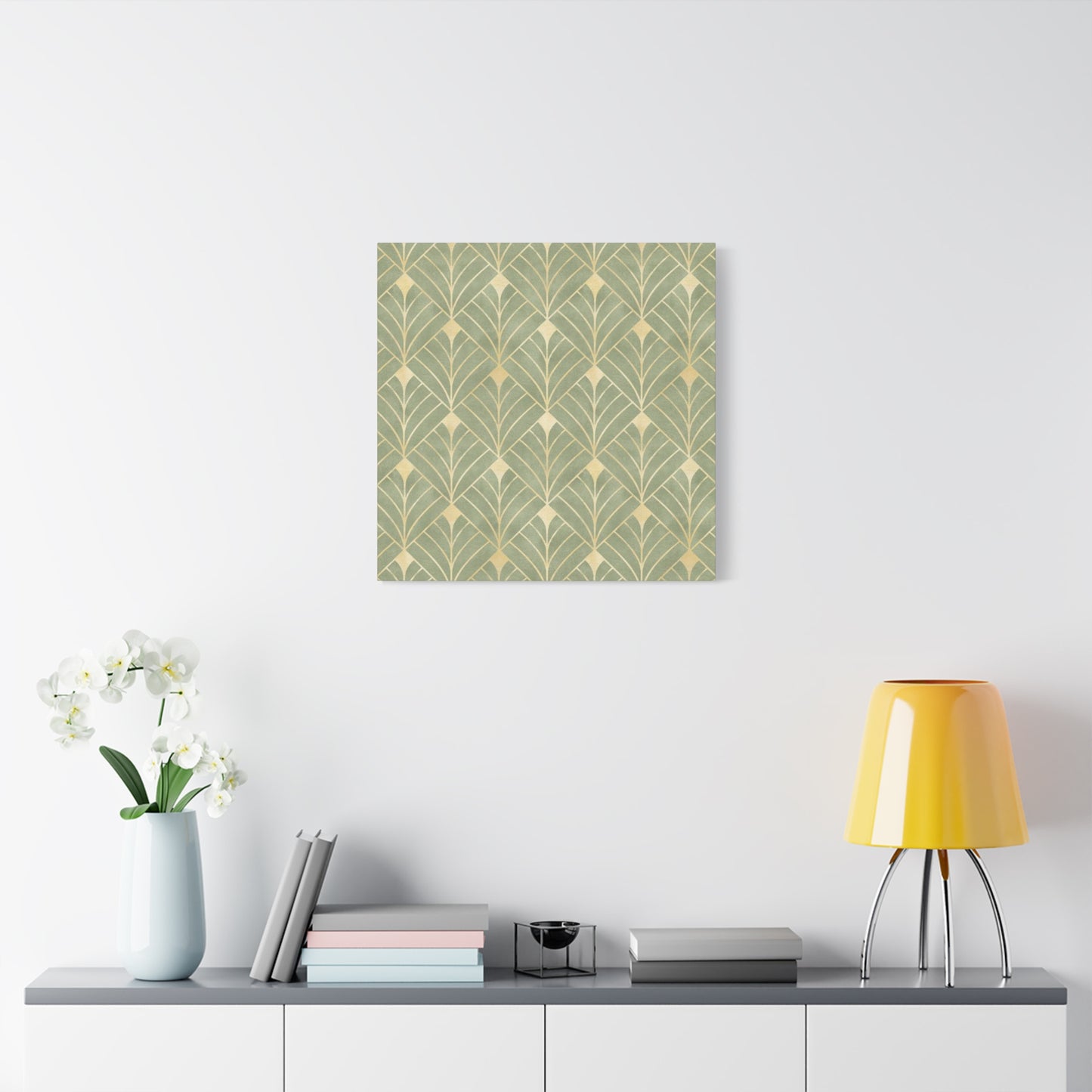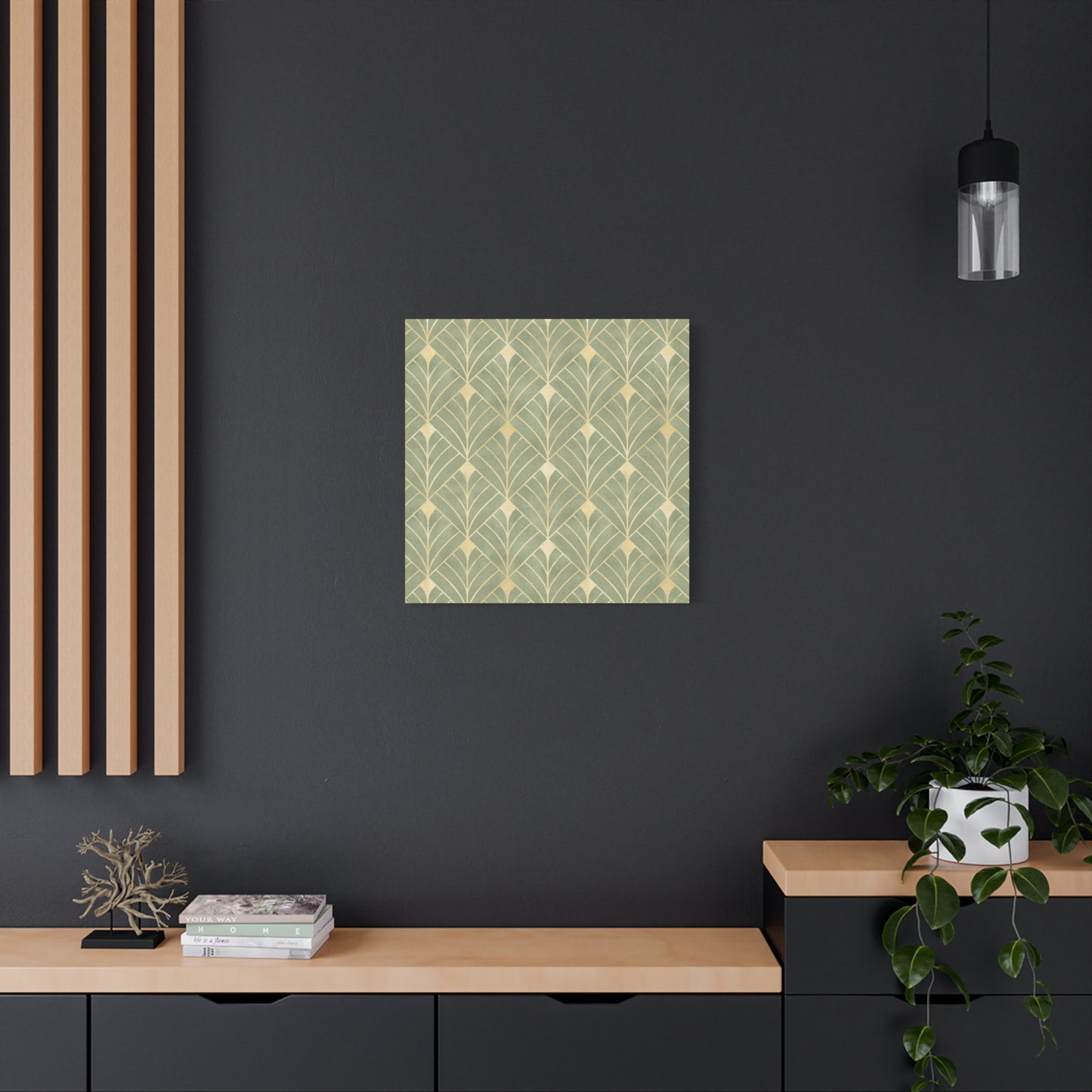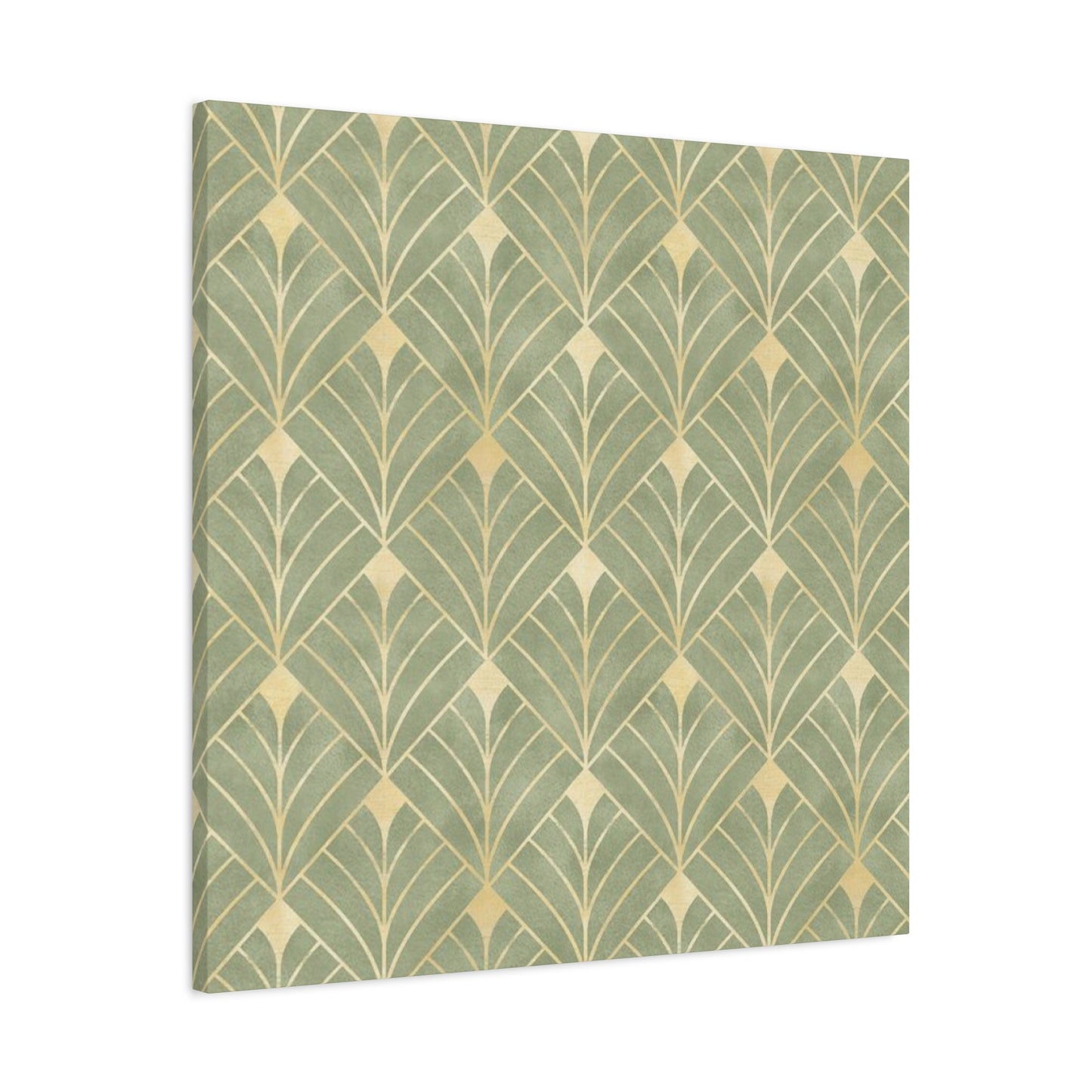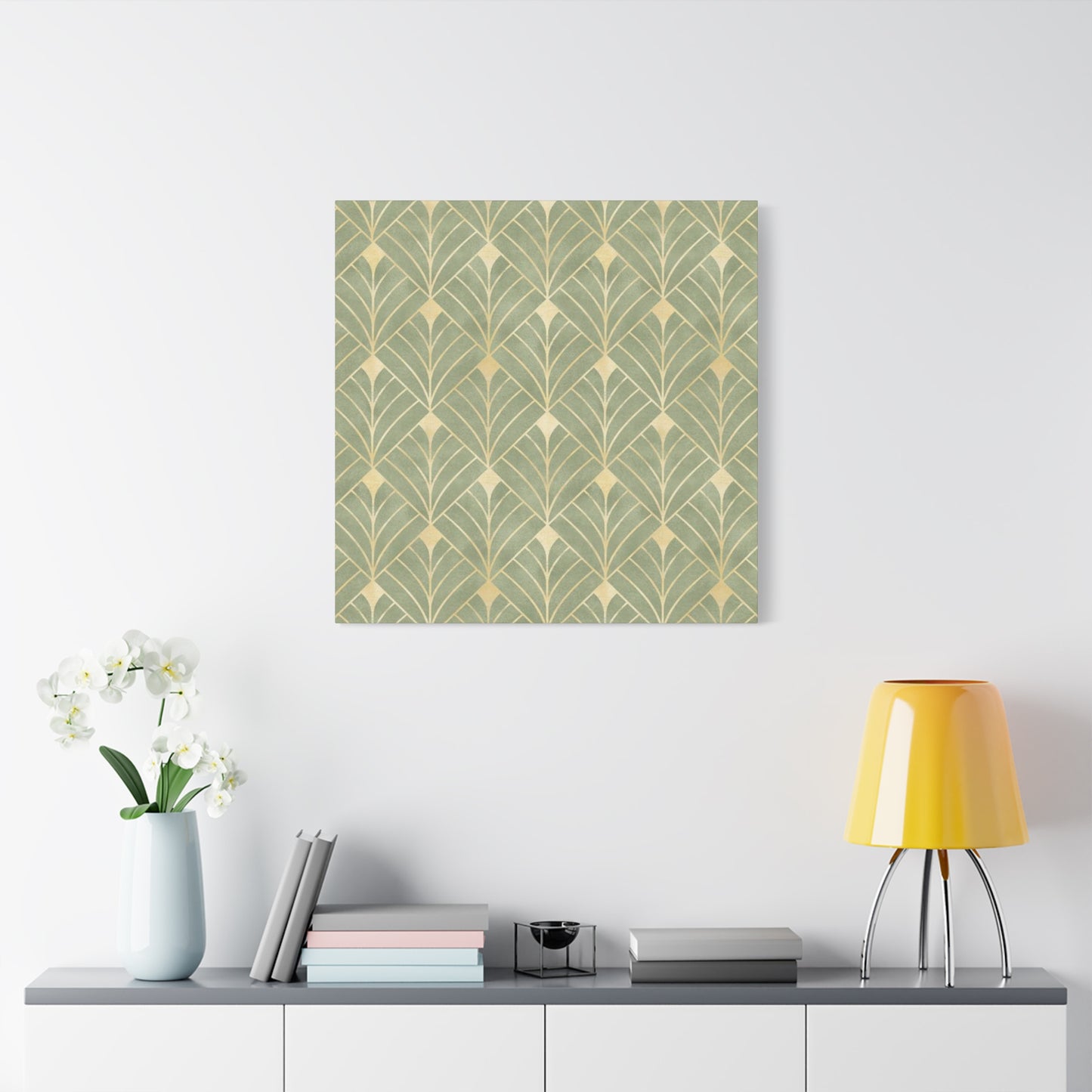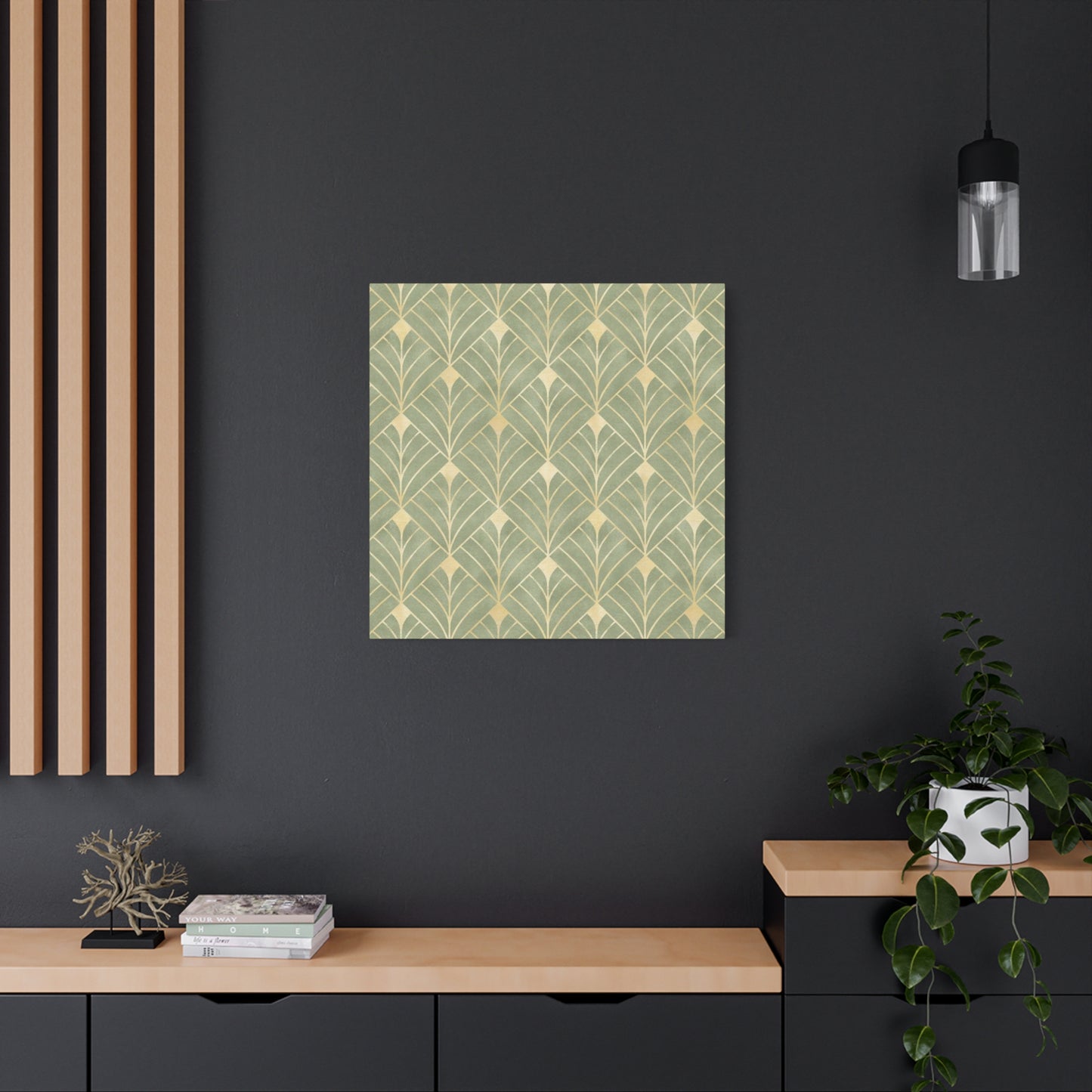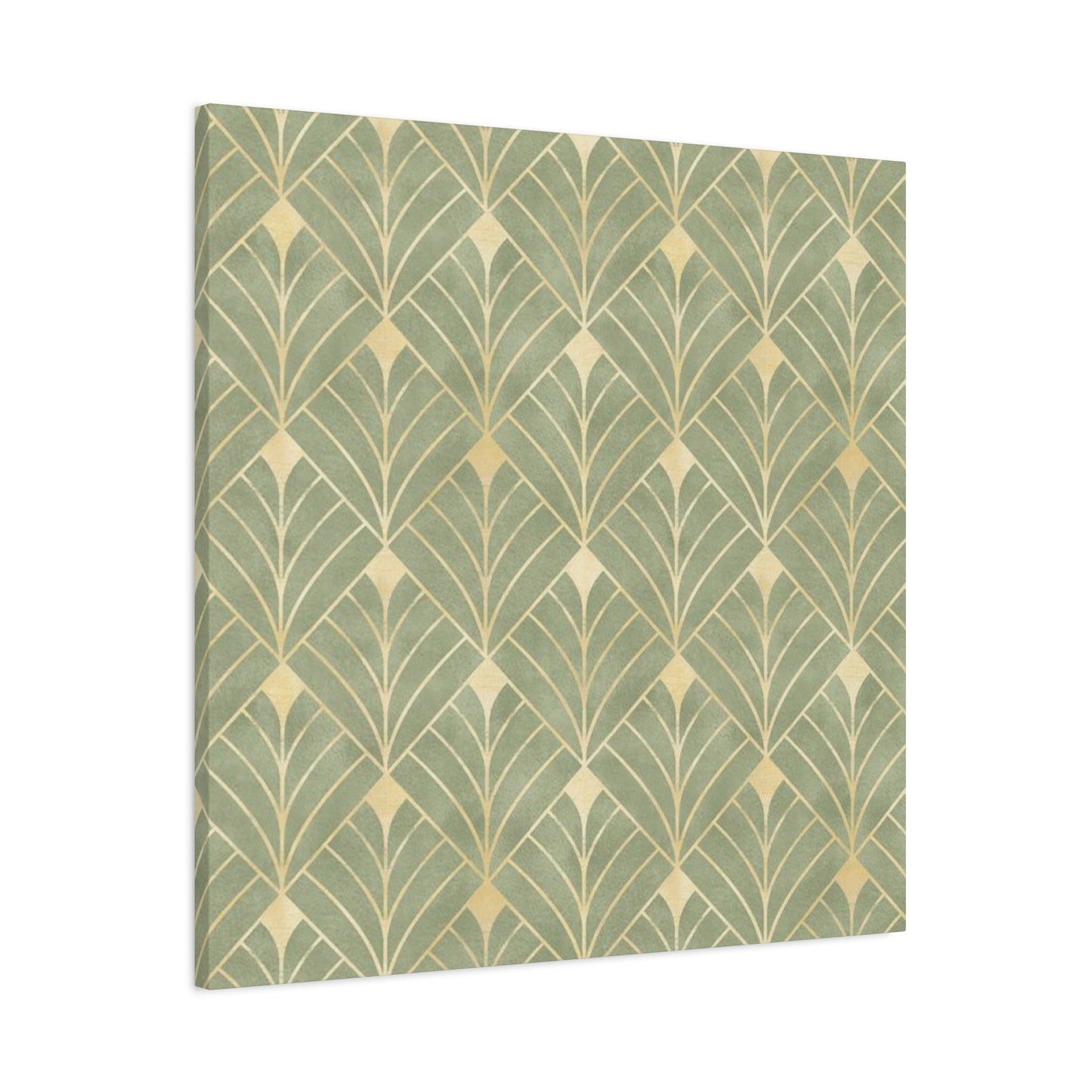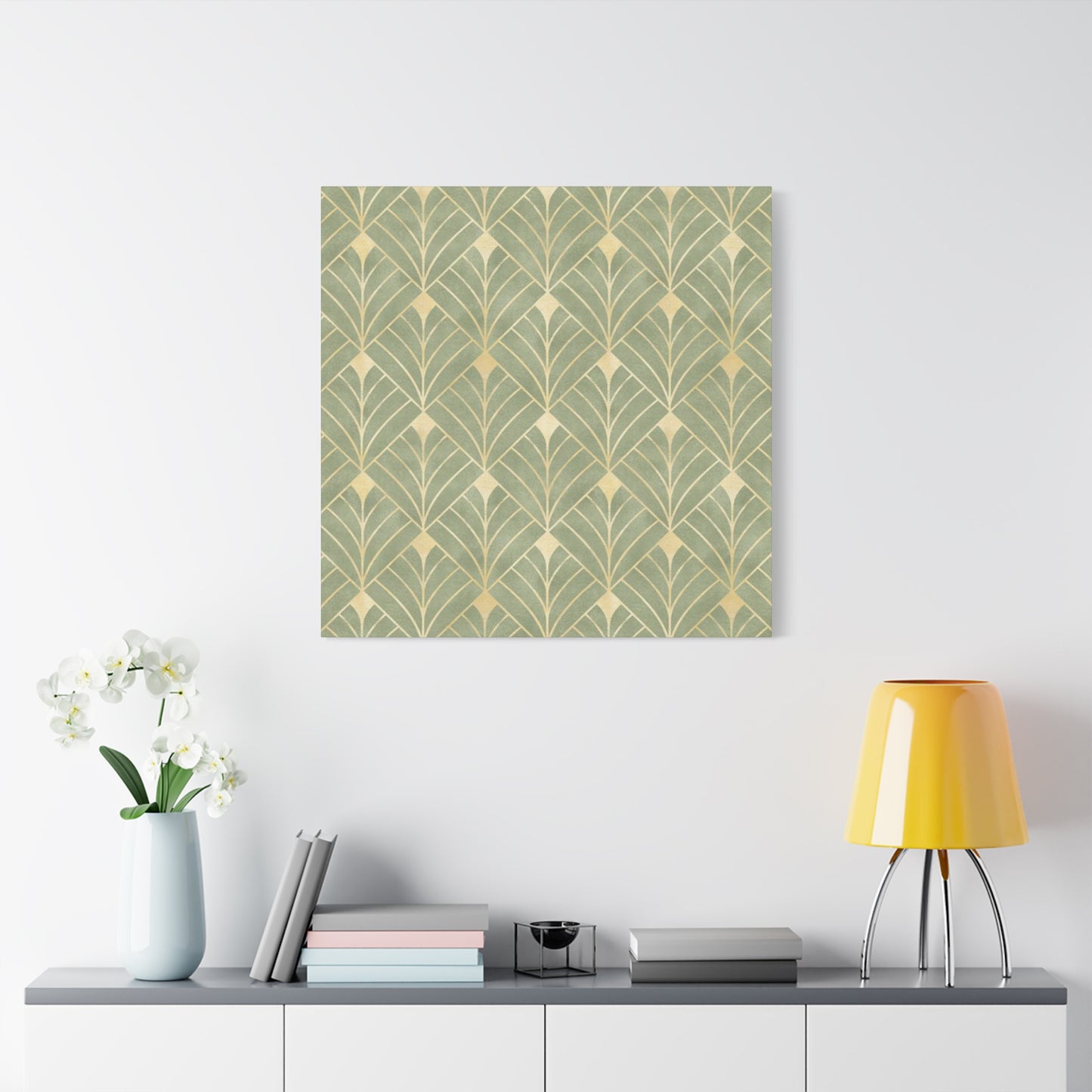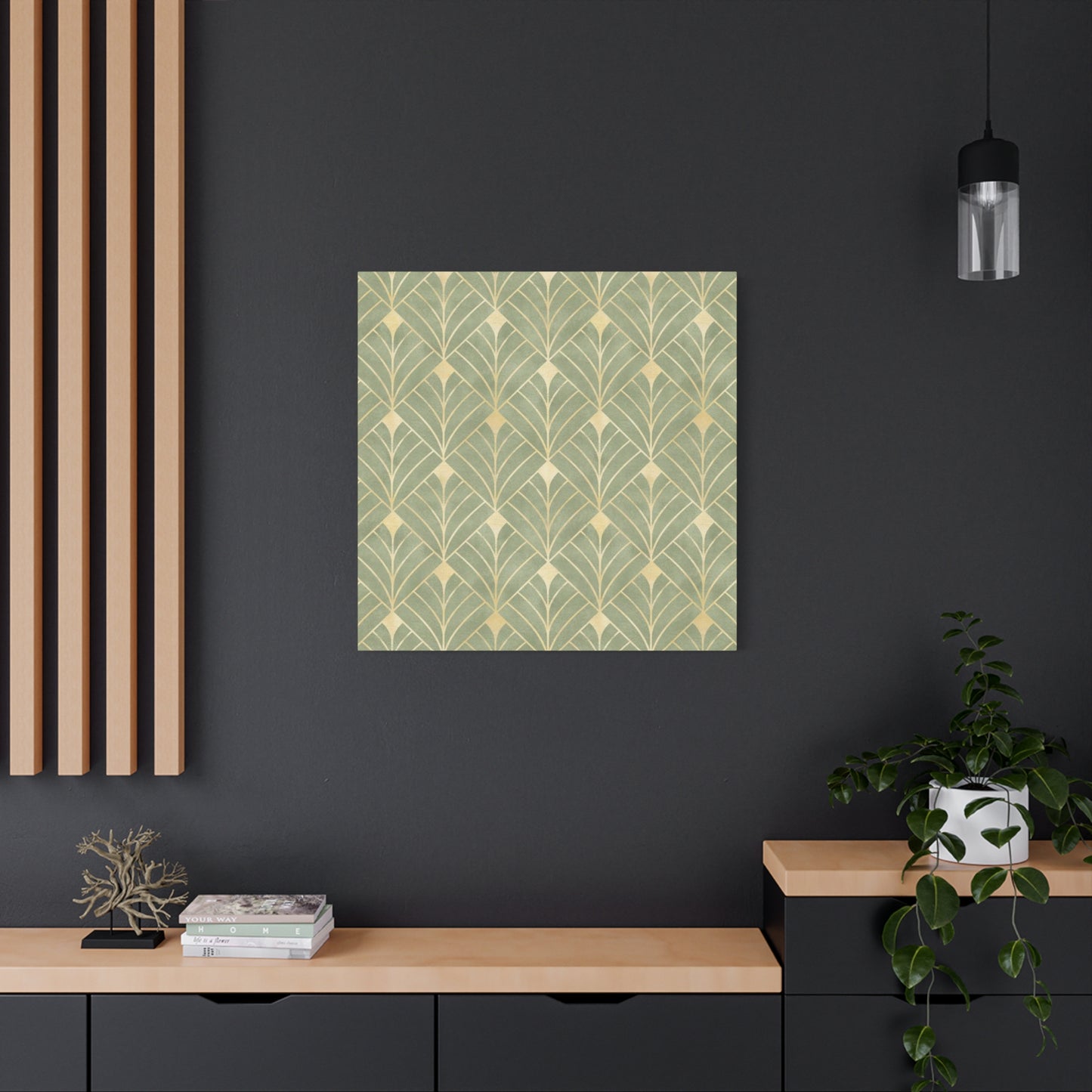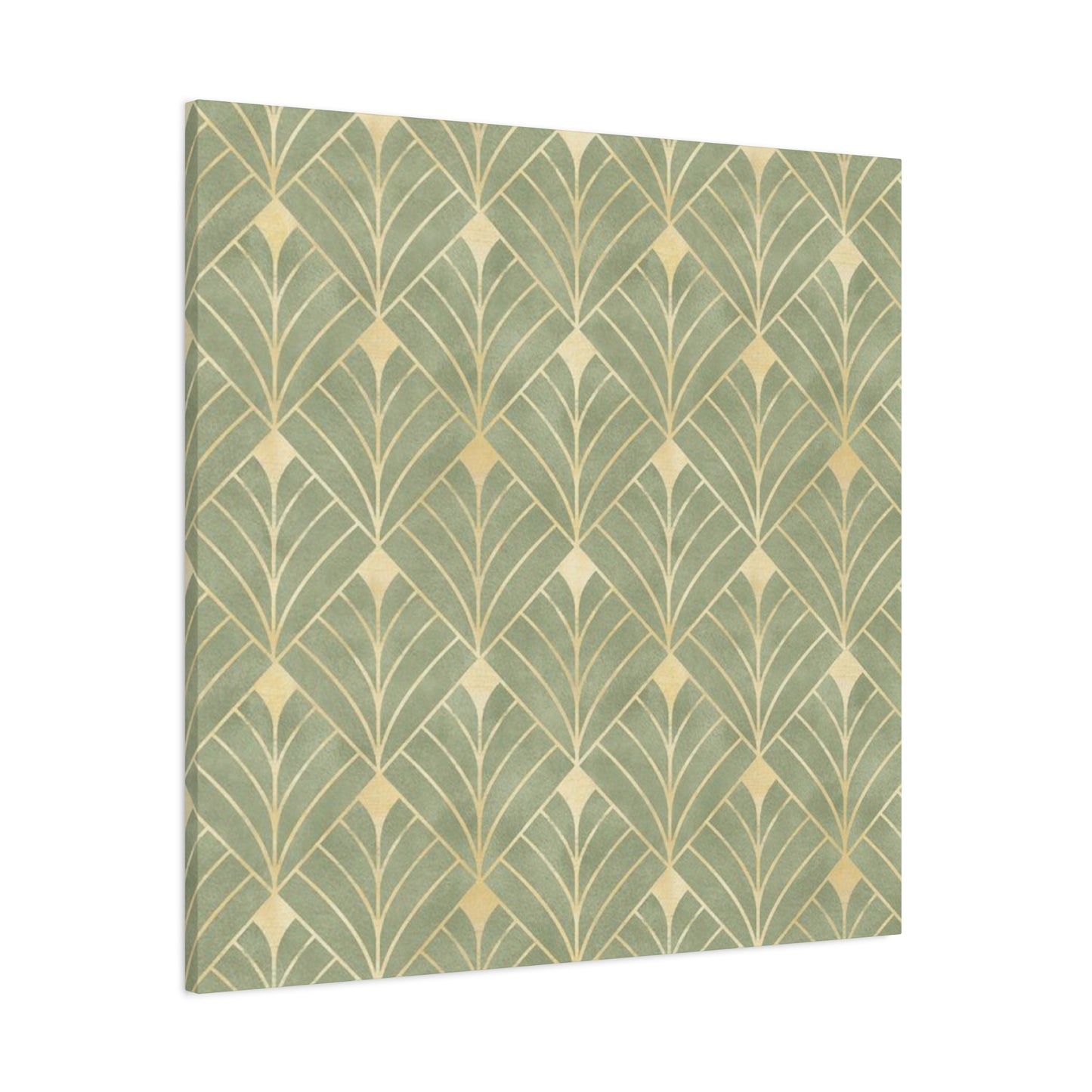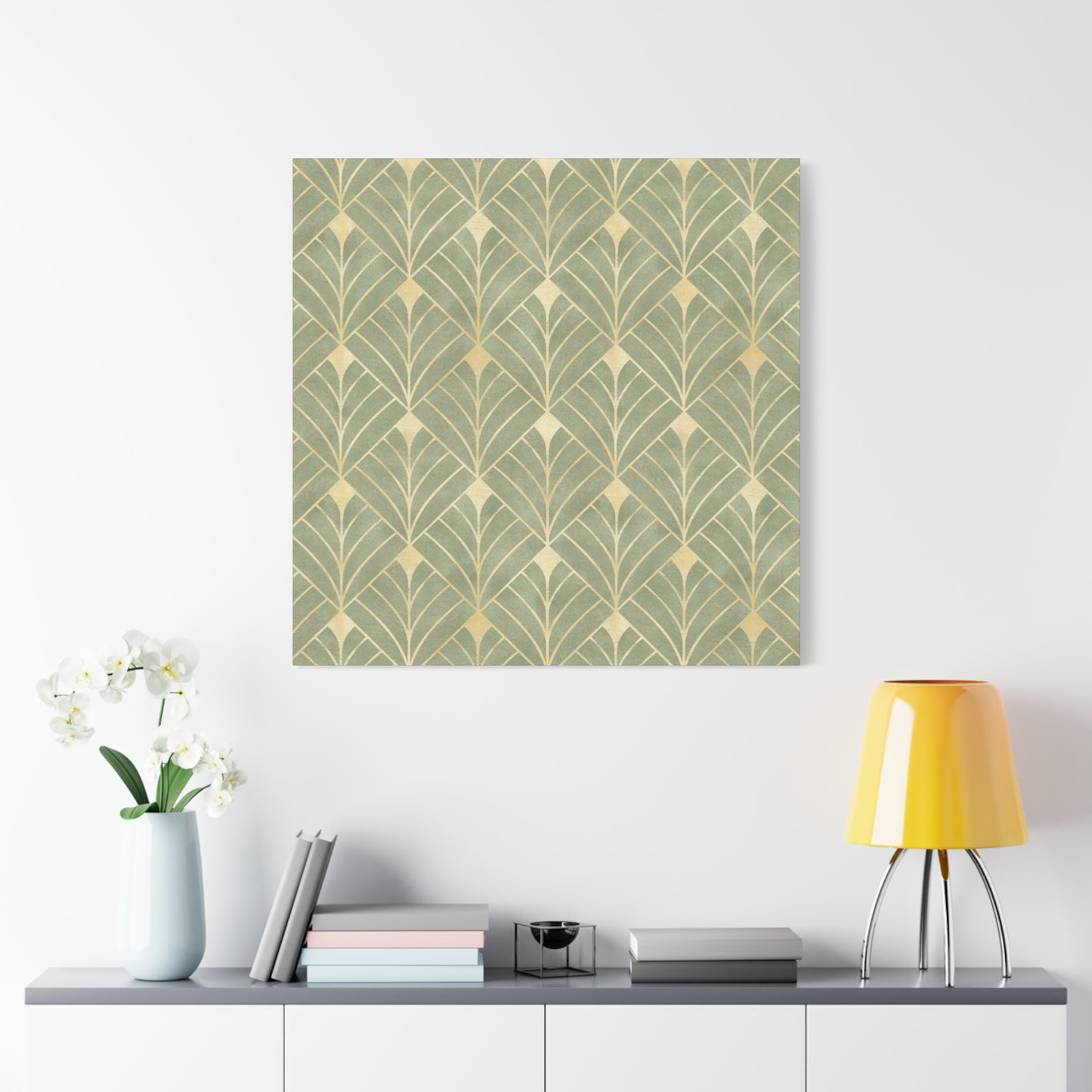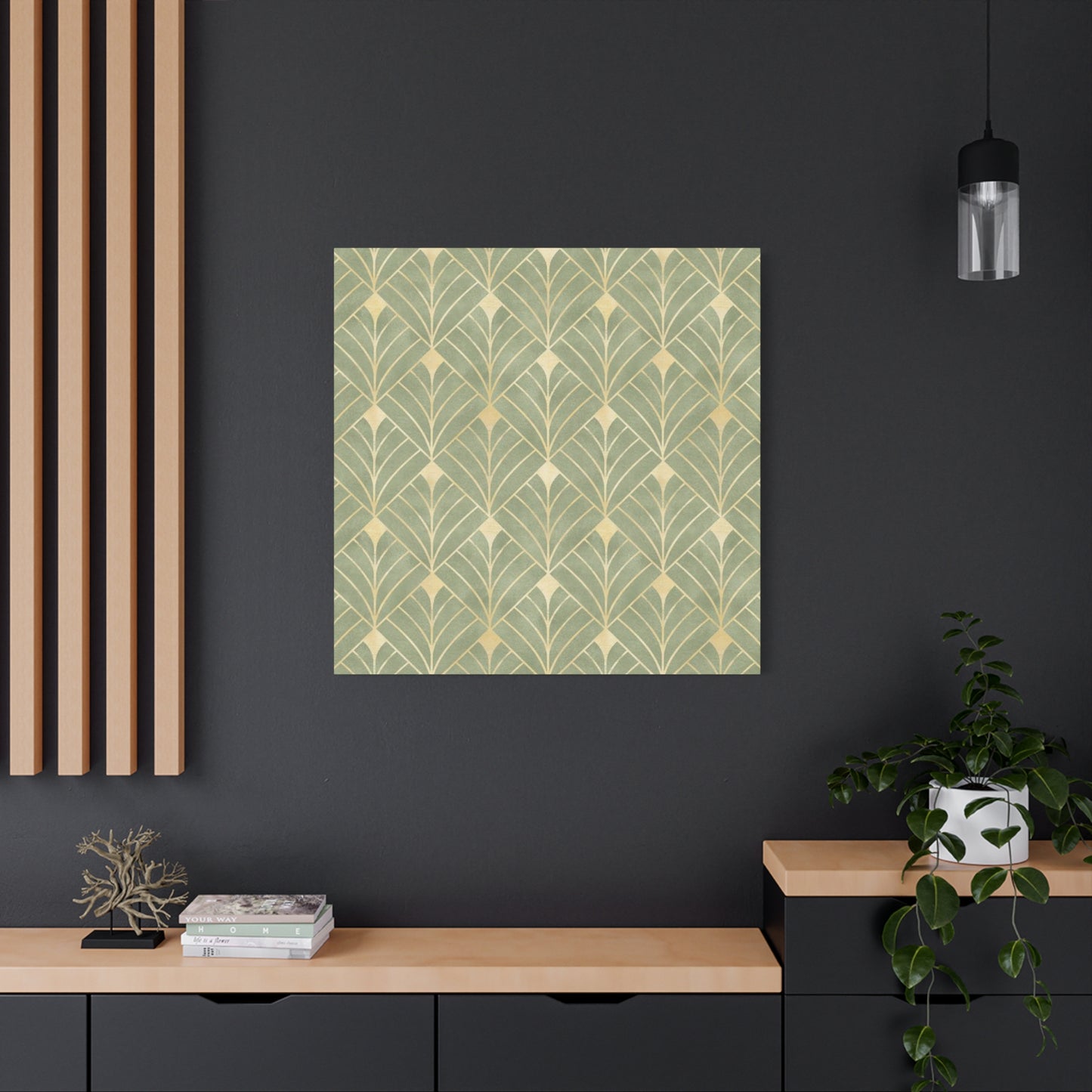The Serene Aesthetic: A Deep Dive into Light Olive Green Patterns for Wall Art
The quest for a tranquil and visually harmonious living environment has led many to rediscover the profound impact of color and pattern. Among the vast spectrum of hues available to designers and homeowners, light olive green has emerged as a particularly potent choice for creating atmospheres of calm, balance, and understated sophistication. This gentle, earthy tone, reminiscent of new spring leaves, tranquil meadows, and the quiet stillness of a forest, carries with it an inherent connection to the natural world. When this soothing color is combined with thoughtfully designed patterns and presented as wall art, it becomes more than mere decoration; it transforms into a crucial element of a home's emotional and aesthetic landscape. The right piece of wall art can serve as a focal point, a conversation starter, or a subtle backdrop that ties an entire room together.
Light olive green wall art, with its unique ability to be both grounding and uplifting, offers a versatile solution for a wide range of decorative styles. This extensive exploration will delve into the multifaceted world of light olive green patterns in wall art, examining how different design philosophies—from modern geometrics to organic, nature-inspired motifs—utilize this serene color to craft beautiful and meaningful pieces for the contemporary home. We will investigate the psychological effects of these designs, their practical applications in various living areas, and the subtle nuances of texture, tone, and form that elevate a simple canvas into a work of art that resonates on a deeper level.
Soothing Light Olive Green Patterns for Wall Art
The concept of "soothing" in the context of visual art is deeply intertwined with human psychology and our innate responses to color, shape, and repetition. Light olive green, as a foundational hue, already lays the groundwork for tranquility. It is a color that speaks of life, growth, and equilibrium. Unlike vibrant, high-energy colors that excite the senses, or dark, somber colors that can feel heavy, light olive green occupies a perfect middle ground. It is visually restful, demanding nothing from the viewer while offering a sense of quiet reassurance. When this color is used to create patterns for wall art, the potential for creating a serene environment is magnified.
A soothing pattern is one that the eye can follow without effort or confusion. It avoids jarring contrasts, chaotic arrangements, and overly complex details that can create a sense of visual noise. Instead, it relies on gentle repetition, soft edges, and a harmonious flow.Consider, for example, a pattern of soft, undulating waves rendered in various shades of light olive green. This type of wall art evokes the gentle movement of water or rolling hills, creating a hypnotic and calming effect. The lines are not rigid or sharp; they are fluid and organic, promoting a sense of ease and relaxation. Another example of a soothing pattern is one based on blurred or watercolor-style foliage.
Imagine a canvas where the distinct shapes of leaves are hinted at rather than sharply defined, blending softly into one another against a creamy or off-white background. This abstract representation of nature captures the essence of a peaceful garden or a misty forest morning, allowing the mind to fill in the details and drift into a state of contemplation. Such pieces of wall art are particularly effective in bedrooms, reading nooks, or any area designated for rest and recuperation. The key is the subtlety of the design; the pattern is present enough to add interest and depth, but not so dominant that it overwhelms the senses.
The materials used in creating the wall art also contribute to its soothing qualities. A matte finish on a canvas print, for instance, will absorb light and create a soft, non-reflective surface that enhances the calming nature of the light olive green palette. This is in contrast to a high-gloss finish, which can create glare and feel more energetic and modern. The texture of the canvas itself can add a subtle tactile quality that, even when viewed from a distance, contributes to the overall sense of organic warmth. When selecting soothing light olive green patterns for wall art, it is also important to consider the scale of the pattern. A large-scale, low-contrast pattern can feel more immersive and tranquil than a small, busy pattern.
The goal is to create a visual experience that feels like a gentle embrace, a quiet whisper rather than a loud statement. The pattern should feel integrated with the color, as if it grew organically from the hue itself. This could be a subtle tonal stripe, a delicate and sprawling vine motif, or a pattern that mimics the soft, mottled appearance of lichen on stone. Ultimately, this type of wall art is an investment in the atmospheric quality of a home, providing a constant, gentle reminder to slow down, breathe, and find a moment of peace in the midst of a busy life. It doesn't shout for attention; it patiently waits to offer a sense of calm to anyone who casts their gaze upon it.
Modern Geometric Designs in Olive Green Canvas Prints
The intersection of modern design principles and the organic subtlety of olive green creates a fascinating and highly sophisticated category of wall art. Modernism, in its purest form, celebrates clean lines, uncluttered compositions, and the beauty of fundamental shapes. When these geometric tenets are applied to canvas prints featuring a light olive green palette, the result is a piece that feels both structured and serene, a perfect marriage of intellectual order and natural calm. This style of wall art is exceptionally well-suited for contemporary homes that favor minimalism, functionality, and an understated aesthetic. Unlike more ornate or traditional art forms, modern geometric designs do not seek to replicate the world realistically; instead, they explore the relationships between shapes, lines, and color fields to create a new kind of visual harmony.
One of the most popular approaches within this genre involves the use of simple, repeating shapes. Imagine a large canvas print featuring a grid of perfectly spaced hexagons, each filled with a slightly different tone of light olive green, ranging from a pale, silvery sage to a deeper, more muted olive. The repetition creates a sense of rhythm and order, which can be very calming to the human mind. The subtle variation in color within the shapes adds depth and prevents the design from feeling flat or sterile. This type of geometric wall art works beautifully as a statement piece above a sleek, low-profile sofa or behind a minimalist dining table. It introduces pattern and color without creating visual clutter, adhering to the modernist mantra of "less is more."
Another compelling direction for modern geometric designs is the use of abstract compositions featuring overlapping shapes and bold lines. A canvas print might feature a series of interlocking rectangles and squares in shades of light olive green, cream, and charcoal gray. The olive green softens the harshness that can sometimes be associated with purely geometric art, infusing the composition with a touch of warmth and earthiness. The interplay of these shapes can create a sense of dynamic balance, leading the eye across the canvas in a deliberate and engaging way. This is not the chaotic energy of an expressionist painting, but rather a controlled and thoughtful dynamism. This style of wall art is ideal for a home office or a living area where you want to foster a sense of focus and creativity without sacrificing a calm atmosphere.
The influence of mid-century modern design is also prevalent in this category. This might manifest as wall art featuring abstract sunburst patterns, boomerangs, or other stylized atomic-era shapes, all rendered in a sophisticated palette of light olive green, mustard yellow, and teak brown. These retro-inspired geometric designs bring a sense of nostalgia and playful elegance to a room. They connect to a historical design movement known for its optimism and innovative use of form, but the light olive green color story keeps the piece feeling fresh, contemporary, and grounded in nature. Furthermore, the concept of negative area is often a key component of modern geometric art. A canvas print might feature a single, beautifully rendered light olive green arc or a set of parallel lines against a vast expanse of white or beige.
In these minimalist compositions, the empty area is just as important as the printed design. It gives the artwork room to breathe and enhances the impact of the simple geometric forms. This approach is perfect for creating a focal point that is powerful in its simplicity, drawing the eye and inviting quiet contemplation. The canvas itself becomes part of the composition, its texture and color contributing to the overall effect. Ultimately, modern geometric designs in olive green canvas prints offer a versatile and sophisticated way to introduce pattern and color into a contemporary home. They honor the principles of clean design while leveraging the soothing, organic qualities of olive green to create wall art that is both intellectually stimulating and emotionally calming.
Nature-Inspired Olive Green Pattern Paintings
The enduring appeal of nature as a subject for art is rooted in our deep, primal connection to the natural world. This concept, often referred to as biophilia, suggests that humans have an innate tendency to seek connections with nature and other forms of life. Nature-inspired olive green pattern paintings tap directly into this instinct, bringing the restorative and calming essence of the outdoors into our homes. Unlike literal landscape paintings that depict a specific scene, these works of wall art focus on the patterns, textures, and rhythms of nature, translating them into artistic compositions that evoke a feeling rather than documenting a place. The use of light olive green is central to this endeavor, as it is the quintessential color of foliage, moss, and the general vitality of the plant kingdom.
One of the most beautiful interpretations of this theme involves patterns derived from leaves and botanical elements. This can range from a semi-realistic depiction of overlapping fern fronds, where each delicate leaflet is carefully rendered, to a more abstract composition of stylized leaf shapes. A large-scale painting featuring a repeating pattern of Monstera leaves or Ginkgo leaves in various shades of light olive green can create a lush, immersive experience, making a room feel like a tranquil, sophisticated conservatory. The pattern provides visual interest, while the olive green palette ensures the overall effect is calming rather than overwhelming. These botanical patterns work exceptionally well in living rooms, sunrooms, or even bathrooms, where they can contribute to a spa-like atmosphere of relaxation and rejuvenation.
Another powerful source of inspiration from nature is the texture and pattern found on a smaller, more intimate scale. Imagine a series of paintings that explore the intricate, crackled pattern of lichen on a tree branch, the delicate veining within a single leaf, or the mottled, dappled light filtering through a forest canopy. These "macro" views of nature reveal a world of abstract beauty. An artist might use various techniques, such as impasto or mixed media, to build up layers of paint and create a tangible texture that mimics the natural surface. A wall art piece that focuses on these subtle, organic patterns in shades of light olive green can be profoundly meditative. It encourages the viewer to look closer and appreciate the complex beauty in the small details of the natural world. This type of art is perfect for a hallway or an entryway, where it can be viewed up close, offering a moment of quiet contemplation during the comings and goings of daily life.
Water is another fundamental element of nature that provides endless inspiration for pattern paintings. The rhythmic patterns of ripples on a pond, the gentle flow of a river over smooth stones, or the abstract shapes formed by reflections on a water's surface can all be translated into beautiful works of art. A painting that captures these fluid, organic movements in a palette of light olive green, soft blues, and sandy beiges can create a profound sense of peace and fluidity. The patterns are inherently non-rigid and ever-changing, which can help to soften the hard lines and angles of modern architecture.
Subtle and Elegant Olive Green Abstract Art
Abstract art offers a unique form of visual communication, one that bypasses literal representation to speak directly to emotions, ideas, and sensations. When this expressive freedom is combined with the gentle and sophisticated palette of light olive green, the result is a category of wall art that is both subtle and profoundly elegant. Unlike art that demands to be identified or understood in a narrative sense, subtle olive green abstract art invites personal interpretation and quiet contemplation. It is about creating a mood and an atmosphere, using color, form, and texture to evoke feelings of calm, balance, and harmony. This style is perfect for those who appreciate art that enhances a living environment without dominating it, art that whispers rather than shouts.
One of the most effective forms of subtle abstract art is color field painting. This style, which emerged in the mid-20th century, focuses on large, solid or subtly modulated fields of color. Imagine a large canvas dominated by a soft, ethereal wash of light olive green. The color might not be perfectly uniform; there could be gentle gradations in tone, with some areas appearing lighter, almost translucent, while others deepen into a more saturated hue. There are no defined shapes or lines, only the immersive experience of the color itself. This type of wall art is incredibly powerful in its simplicity. It can serve as a meditative focal point in a minimalist room, creating a sense of infinite depth and serenity. The subtlety of the piece means it complements a wide range of furnishings and decor, adding a touch of sophisticated color without introducing a complex or distracting pattern. It is the epitome of elegance—making a significant impact with the most minimal of means.
Another approach to elegant olive green abstract art involves lyrical abstraction. This style is characterized by fluid, calligraphic lines and soft, organic forms. An artist might create a composition of sweeping, graceful brushstrokes in various opacities of light olive green over a neutral, textured background. The movement of the lines can suggest anything from dancing reeds in a gentle breeze to the flowing script of an unknown language. The effect is one of effortless grace and spontaneity. This type of abstract wall art feels personal and expressive, yet its abstract nature allows it to remain open to interpretation. It introduces a sense of gentle movement and energy into a room, but the muted olive green palette ensures that this energy is calming and restorative rather than frantic. Such a piece would be beautifully placed in a dining room or a formal living area, where it can add a touch of artistic flair and stimulate quiet conversation.
Texture can also play a crucial role in creating subtle and elegant abstract works. An artist might use a palette knife to apply thick layers of paint (a technique known as impasto), creating a low-relief surface that catches the light in interesting ways. A piece of wall art might feature a simple, monolithic block of light olive green, but its surface is alive with subtle ridges, peaks, and valleys. This adds a tactile dimension to the work, making it more engaging and complex without resorting to busy patterns or multiple colors. The elegance comes from the focus on a single hue and the sophisticated interplay of light and shadow across the textured surface. Alternatively, an artist might incorporate other materials, such as fine sand or gesso, into the paint to create a matte, stone-like finish.
Light Olive Green Textured Patterns on Canvas
While color and pattern are the two primary components of most wall art, the element of texture introduces a third, often overlooked, dimension that can dramatically enhance the visual and emotional impact of a piece. Light olive green textured patterns on canvas move beyond the flat, two-dimensional surface, inviting not just the eye but also the sense of touch, even if only imaginatively. Texture adds depth, creates a dynamic interplay with light, and imbues a piece of art with a tangible, sculptural quality. When combined with the soothing, natural hue of light olive green and a thoughtful pattern, texture can elevate a simple canvas into a sophisticated and engaging work of art.
One of the most classic techniques for creating texture is impasto, where paint is laid on an area of the surface in very thick layers, usually thick enough that the brush or painting-knife strokes are visible. Imagine a canvas where a pattern of broad, overlapping leaves is rendered in light olive green. Instead of being flat, each leaf is sculpted with thick paint, its central vein a raised ridge and its edges curling slightly away from the canvas. As the ambient light in the room changes throughout the day, different aspects of this texture are highlighted, creating subtle shifts in shadow and emphasis. The painting is no longer a static image; it is a dynamic surface that interacts with its environment. This technique gives the artwork a sense of substance and presence, making the natural pattern feel more real and alive.
Another fascinating approach involves the use of mixed media to build up textured surfaces. An artist might begin with a flat layer of light olive green paint and then apply a pattern using a medium like modeling paste or gesso. This paste can be combed, stamped, or sculpted while wet to create a variety of repeating patterns—perhaps a series of parallel grooves, a grid of small squares, or a swirling, organic motif. Once dry, this raised pattern can be painted over with more shades of light olive green or a contrasting color, or it can be left a neutral white or grey to create a subtle, low-contrast design. This method allows for a high degree of precision and control over the textured pattern. A piece of wall art featuring a subtle, geometric textured pattern in a monochromatic olive green scheme can be incredibly sophisticated, adding architectural interest to a wall without introducing competing colors.
Artists can also incorporate natural and unconventional materials directly into the artwork to create texture. Fine sand, crushed stone, or even natural fibers like burlap or string can be mixed with the paint or adhered to the canvas. Consider a piece that aims to evoke the feeling of a mossy forest floor. The artist might use a mixture of light olive green paint and fine sand to create a gritty, earthy texture, applying it in an abstract, mottled pattern. This not only looks like a natural surface but also carries the conceptual weight of its materials. This type of wall art is deeply grounding, forging a direct connection between the indoor environment and the raw elements of the natural world. The textured pattern is not just representing nature; in a way, it is nature, brought onto the canvas.
Calm and Earthy Tones in Wall Art Prints
While light olive green is a wonderfully calming color on its own, its true versatility and power are often unlocked when it is thoughtfully paired with other calm and earthy tones. A piece of wall art that incorporates a palette of related natural hues can create a richer, more layered, and deeply harmonious atmosphere in a room. These artworks move beyond a simple monochromatic scheme to build a more complex color story that speaks of the earth, the sky, and the quiet beauty of the natural landscape. This approach allows for greater depth and nuance, enabling the wall art to connect with a wider range of furnishings, textiles, and finishes within a home. Light olive green often acts as the bridge in these palettes, the central, life-affirming hue that ties everything together.
A classic and highly effective combination involves pairing light olive green with various shades of beige, cream, and taupe. Imagine a canvas print featuring an abstract pattern of soft, overlapping shapes. Some shapes are a gentle olive, others a warm sandy beige, and others a soft, creamy off-white. This palette is reminiscent of a tranquil beach scene, with the olive representing coastal grasses, the beige representing the sand, and the cream representing the sea foam or clouds. The overall effect is incredibly light, airy, and serene. This type of wall art is perfect for creating a relaxed, coastal-inspired interior or for complementing a Scandinavian design scheme that relies on light, neutral colors and natural materials. The olive green provides a touch of cool, organic color that prevents the neutral palette from feeling monotonous.
For a warmer and more grounded feel, light olive green can be beautifully combined with deeper earthy tones like terracotta, burnt sienna, and ochre. This palette evokes the sun-drenched landscapes of the Mediterranean or the American Southwest. A piece of wall art might feature a geometric pattern or a stylized botanical motif where light olive green leaves are set against a background of warm terracotta or accented with lines of golden ochre. This combination is both calming and invigorating. The olive green provides its signature tranquility, while the warmer tones add a sense of energy, passion, and connection to the earth's clay and minerals. This style of artwork is ideal for a dining room or kitchen, where it can create a welcoming and convivial atmosphere. It pairs wonderfully with natural wood furniture, leather, and woven textiles.
Another sophisticated and contemporary palette combines light olive green with various shades of grey and muted blue. This creates a cooler, more atmospheric feel, reminiscent of a misty morning in the mountains or the quiet moments after a rainstorm. A large abstract canvas print could feature washes of light olive green blending seamlessly into a soft slate grey, with subtle hints of a dusty, pale blue. This color combination is incredibly chic and modern. It speaks of introspection, calm, and a connection to the elements of air and water. This type of wall art is exceptionally well-suited for a modern living area, a home office, or a bedroom where the goal is to create a peaceful and contemplative retreat from the outside world.
Minimalist Olive Green Patterns for Modern Homes
Minimalism as a design philosophy is not about emptiness or deprivation; it is about intentionality. It is the practice of stripping away the superfluous to reveal the essential beauty of form, color, and material. In the context of wall art for modern homes, this translates to pieces that make a powerful statement through their very simplicity. Minimalist olive green patterns, therefore, are not about intricate details or complex compositions. Instead, they focus on the profound impact of a single line, a simple shape, or a subtle texture, all rendered in the calming and sophisticated hue of light olive green. This style of art is the perfect complement to a modern interior that values clean lines, open areas, and a sense of uncluttered serenity.
One of the purest forms of minimalist pattern is the single line or simple linear composition. Imagine a large, vertically oriented canvas that is entirely a soft, neutral beige, with a single, perfectly straight line of light olive green running from top to bottom, slightly off-center. Or consider a horizontal piece featuring a gentle, hand-drawn arc in olive green, suggesting a distant horizon or the crest of a hill. This type of wall art is incredibly impactful precisely because it is so restrained. It draws the eye, invites contemplation, and introduces a deliberate touch of color and form without creating any visual noise. The olive green hue ensures that the line feels organic and grounded, preventing the starkness that can sometimes accompany minimalist art. This approach works beautifully in an entryway, a hallway, or above a minimalist console table, where its simple elegance can be appreciated without distraction.
Another key element of minimalist design is the use of basic geometric shapes in isolation or in very simple arrangements. A set of three matching canvas prints, a triptych, could be a compelling choice. The first canvas might feature a solid light olive green circle in its center. The second, a square. The third, a triangle. Hung side-by-side, they create a rhythmic and intellectually satisfying display. The pattern here is not within a single canvas, but across the series of canvases. The focus is on the pure, platonic beauty of the shapes themselves, with the light olive green color imbuing them with a sense of calm and a connection to nature. This type of modular wall art is versatile and can be adapted to various wall sizes and configurations.
The concept of negative area is also paramount in minimalist art. The unpainted or background portion of the canvas is just as important as the pattern itself. A minimalist piece might consist of a small, repeating pattern of tiny light olive green dots or plus signs confined to one corner of a very large canvas. The vast expanse of empty area surrounding the pattern serves to amplify its importance and create a sense of balance and calm. It communicates a feeling of spaciousness and clarity.
This is a sophisticated way to introduce a pattern into a room without it feeling busy. The pattern is a subtle detail to be discovered, rather than an overwhelming feature. This approach is ideal for a serene bedroom or a focused workspace, where a clear mind and a calm environment are desired. Ultimately, minimalist olive green patterns for modern homes are about the thoughtful and deliberate use of visual elements. They demonstrate that a piece of wall art does not need to be complex to be beautiful or meaningful. By harnessing the power of simplicity and the soothing qualities of light olive green, these pieces can bring a sense of order, peace, and understated elegance to any contemporary living environment.
Olive Green Botanical Patterns on Canvas
The enduring popularity of botanical themes in home decor speaks to a collective desire to maintain a connection with the plant world. Olive green botanical patterns on canvas are a particularly authentic and sophisticated expression of this trend, as the color palette is inherently linked to the subject matter. These works of wall art celebrate the vast diversity and intricate beauty of plant life, translating leaves, flowers, and stems into captivating patterns that can range from scientifically accurate to wonderfully abstract. They bring a sense of vitality, growth, and natural harmony into the home, transforming a simple wall into a lush, artistic garden.
A classic and timeless approach within this genre is the vintage-inspired botanical illustration. This style harks back to the detailed scientific drawings of the 18th and 19th centuries, where botanists and artists meticulously documented plant species. A canvas print might feature a beautifully rendered fern, a sprig of eucalyptus, or a collection of different herb leaves, all depicted with fine lines and delicate shading. When this traditional illustration style is presented in a monochromatic palette of light olive green against a creamy, aged-paper-like background, the effect is one of quiet elegance and scholarly charm. A series of these prints, each featuring a different specimen, can be arranged in a grid to create a stunning gallery wall in a study, dining room, or living area. This style connects the home to a history of appreciating and studying the natural world.
For a more modern and dynamic take on the botanical theme, artists often turn to large-scale, stylized patterns. The iconic, fenestrated leaf of the Monstera deliciosa, the delicate, fan-like shape of the Ginkgo biloba leaf, or the feathery fronds of a palm tree are popular motifs. A large canvas might feature a repeating, overlapping pattern of these bold leaf shapes, creating an immersive and almost tropical feel. By rendering the pattern entirely in shades of light olive green, the artwork remains sophisticated and calming, avoiding the potential garishness of a more colorful jungle theme. This type of wall art acts as a powerful focal point, perfect for placing behind a bed to serve as a visual headboard or on a large, empty wall in a living room to make a dramatic yet tasteful statement. It infuses the room with energy and life, celebrating the graphic beauty of plant forms.
A softer, more romantic interpretation of botanical patterns can be found in watercolor-style representations. Imagine a canvas where delicate branches of willow or olive leaves are painted with soft, translucent washes of light olive green. The colors bleed and blend into one another, creating a dreamy, ethereal effect. The focus is less on precise detail and more on capturing the light, airy essence of the plants. This style is wonderfully serene and is perfectly suited for creating a tranquil and restful atmosphere in a bedroom or a cozy reading corner. The softness of the watercolor technique complements the gentle nature of the olive green hue, resulting in a piece of wall art that is both beautiful and deeply calming.
Furthermore, abstract botanical patterns offer another layer of artistic interpretation. This might involve a composition that is inspired by the pattern of veins on a leaf, the cellular structure of a plant stem, or the dense tangle of a forest undergrowth, but it is not a literal depiction. The artwork uses organic lines, mottled textures, and layered shades of light olive green to evoke the feeling of being surrounded by plant life. This abstract approach is highly versatile and can seamlessly integrate into a wide range of modern and contemporary interiors. Olive green botanical patterns on canvas offer a diverse and beautiful way to celebrate the plant kingdom within the home. Whether through detailed illustrations, bold graphics, or soft watercolors, they bring a touch of nature's enduring grace and vitality to our indoor lives.
Organic Shapes in Light Olive Green Wall Art
While geometric art finds its beauty in the precision of lines, angles, and perfect shapes, there is another category of design that draws its inspiration from the imperfect, flowing, and asymmetrical forms of the natural world. Organic shapes, characterized by their smooth curves and irregular outlines, are the building blocks of everything from stones and clouds to cells and coastlines. When these natural forms are used as the basis for light olive green wall art, they create a sense of ease, comfort, and fluidity. This style of art eschews rigidity in favor of a more relaxed and intuitive aesthetic, making it an ideal choice for creating environments that feel both sophisticated and welcoming.
One of the most direct interpretations of this theme involves shapes that mimic those found in a landscape. Consider a large canvas featuring a series of soft, overlapping, rounded forms in various tones of light olive green, sage, and muted moss. The composition could be reminiscent of smooth river stones piled at the water's edge, or the rolling, gentle contours of distant hills. There are no sharp corners or straight lines, only soft, undulating curves that guide the eye peacefully across the artwork. This type of wall art is incredibly grounding. It connects to the ancient, elemental forms of the earth, fostering a sense of stability and calm. It would be a perfect addition to a living room or family room, where it can contribute to a comfortable and relaxed atmosphere.
Another source of inspiration for organic shapes is the microscopic world. The forms of single-celled organisms, the branching patterns of neurons, or the way liquids blend and separate can all be translated into compelling abstract art. A piece of wall art might feature a collection of amoeba-like, free-form shapes floating in a sea of pale olive green, or an intricate, web-like pattern of fine, branching lines. These designs are fascinating because they feel both abstract and strangely familiar, tapping into the universal patterns of life itself. The use of a light olive green palette reinforces this connection to biology and growth. This style of artwork is intellectually stimulating yet visually soothing, making it a great choice for a home office, a library, or any area where creativity and contemplation are encouraged.
The concept of flow and movement is also central to art based on organic shapes. An artist might create a composition that suggests the swirling patterns of smoke, the marbling in a piece of stone, or the gentle drift of clouds across the sky. These are patterns of "controlled chaos," where the forms are irregular and unpredictable, yet contained within a harmonious whole. A canvas featuring these kinds of fluid, amorphous shapes in light olive green can add a sense of gentle dynamism to a room. It feels less static than a geometric design, introducing a soft energy that is both calming and captivating.
This type of wall art is particularly effective at softening a room with a lot of hard-edged furniture and strict architectural lines, providing a welcome visual counterpoint. The beauty of organic shapes in light olive green wall art lies in their inherent imperfection and natural grace. They are a celebration of the non-symmetrical, the flowing, and the free-form. Unlike rigid geometric patterns that can sometimes feel cold or impersonal, art based on organic shapes feels human, approachable, and deeply connected to the living world. It is a gentle reminder that there is profound beauty in embracing the natural, imperfect flow of life.
Versatile Olive Green Art for Living Spaces
The true measure of a great decorative element is its versatility—its ability to adapt and thrive in a variety of settings. Light olive green wall art, particularly that which features thoughtful and well-designed patterns, is exceptionally versatile. Its unique combination of a calming, natural color with a wide range of possible styles—from minimalist and geometric to organic and botanical—allows it to enhance the atmosphere of virtually any room in the house. Its chameleon-like quality means it can serve as a bold focal point or a subtle, unifying backdrop, depending on the specific piece and its placement. Understanding how to leverage this versatility is key to creating a cohesive and beautifully curated home.
In the living room, often the social and aesthetic heart of the home, a large-scale piece of light olive green wall art can act as a stunning centerpiece. A bold geometric canvas print or a richly textured abstract painting hung above the main sofa can anchor the entire seating area and establish the room's color palette. The light olive green can be picked up in accent pillows, throws, or decorative ceramics to create a harmonious and professionally designed look. For a more subtle approach, a triptych of minimalist botanical prints can be hung on a secondary wall, adding a touch of natural elegance without overwhelming the main visual focus of the room. The art here should complement the room's energy—calm and inviting for a space meant for relaxation, or more dynamic and abstract for a space used for entertaining.
The bedroom is a sanctuary, a place for rest and rejuvenation, and the choice of wall art should reflect this purpose. Here, soothing and subtle patterns in light olive green are ideal. A large canvas featuring a soft, watercolor-style foliage pattern or an abstract piece with gentle, flowing organic shapes hung above the bed can create a profound sense of tranquility. The goal is to choose art that calms the mind and promotes a peaceful state. A minimalist piece with a simple line or shape can also be very effective, contributing to an uncluttered and serene environment conducive to sleep. The light olive green color itself has been shown to be restful to the eye, making it a perfect choice for the bedroom's primary piece of art.
In the dining room, wall art can set the mood for shared meals and conversations. A nature-inspired pattern painting or a set of elegant botanical prints in light olive green can create a fresh and inviting atmosphere. The connection to nature can make the dining experience feel more grounded and wholesome. An abstract piece with a palette of olive green and warmer earthy tones like terracotta can foster a sense of conviviality and warmth. The scale of the art is important here; it should be proportional to the wall and the dining set, creating a balanced and pleasing composition that enhances the dining experience without being distracting.
Even in more functional areas like the home office or the kitchen, light olive green wall art can play a significant role. In a home office, a minimalist geometric or a subtle abstract piece can help to foster focus and reduce stress. The calming properties of the color can create a more productive and less fatiguing work environment. In the kitchen, a series of small botanical prints featuring herbs or a single, cheerful pattern painting can bring a touch of life and color to the space. The versatility of light olive green means it pairs well with a variety of kitchen finishes, from natural wood cabinets to sleek stainless steel appliances.
Conclusion
The journey through the world of light olive green patterns in wall art reveals a rich tapestry of aesthetic possibilities, all woven together by the common thread of tranquility and a deep connection to the natural world. This exploration has demonstrated that a single color, when thoughtfully applied across a spectrum of artistic styles, can profoundly shape the atmosphere and emotional resonance of our most personal environments. From the structured order of modern geometric designs that appeal to our sense of logic and clarity, to the free-flowing grace of organic shapes that speak to our intuitive and primal selves, light olive green proves to be a remarkably adaptive and expressive hue.
It is a color that embodies balance—it is neither too warm nor too cool, too vibrant nor too dull. It occupies a perfect, harmonious center, making it an ideal foundation for creating spaces that feel both grounded and uplifting.We have seen how soothing patterns, characterized by gentle repetition and soft forms, can transform a room into a sanctuary for rest and contemplation, directly impacting our well-being by reducing visual stress. We have delved into the power of nature-inspired and botanical motifs, which tap into our biophilic instincts to bring the healing essence of the outdoors inside, fostering a sense of vitality and growth.
The discussion of abstract art, whether subtle and elegant or rich with texture, highlighted how this serene color can be used to communicate pure emotion and mood, inviting personal interpretation and adding a layer of sophisticated intrigue to a home. The examination of minimalist principles showcased the profound impact of simplicity, proving that a single line or a basic shape in this gentle green can be more powerful than the most complex composition.Furthermore, the versatility of light olive green art has been shown to extend across every room of the house. It is not confined to a single decorative style but can seamlessly integrate into modern, traditional, rustic, and eclectic settings alike.
Whether serving as a dramatic focal point in a living room, a calming presence in a bedroom, or a touch of organic charm in a kitchen, its ability to pair with a wide array of other earthy tones and materials makes it an invaluable asset for anyone looking to create a cohesive and beautifully curated interior. In the end, the choice to incorporate light olive green patterned wall art into a home is more than a decorative decision. It is an intentional act of cultivating a certain quality of life—one that values peace, elegance, and a persistent connection to the timeless beauty of the natural world. It is an investment in an atmosphere that nurtures the soul, calms the mind, and turns a mere house into a true haven of tranquility.

















